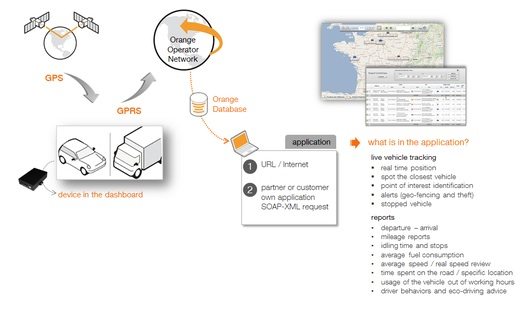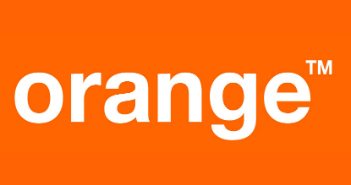Last week I mentioned the Orange-Tesla partnership announcement and since then have had the opportunity to discuss in more depth with Samuel Loyson, Orange Business Services Head of Connected Car Program, details behind the announcement.
In 2011, the Smart Cities & Territories program was launched within Orange Business Services. Orange Business Services places a great deal of focus on M2M and is categorized as one of the key growth strategies for the company.
Within this very important category, the automotive segment is viewed as the segment with the highest growth potential currently. The connected car program focuses on connectivity and turnkey solutions for customers in this area. Customers could be OEM manufacturers or aftermarket providers of fleet and telematics solutions.
Highlights of the fleet solution include a turnkey offer that provides equipment, connectivity and management. Devices include the GSM and GPS antenna and are fitted for the vehicle. All data is accessible in a secure web space for the organization utilizing the service. Roaming service is available anywhere Orange has roaming agreements.
The second offer is the M2M Intelligent Apps Enabler, a cloud-based platform to enable enterprises to build M2M applications. The platform enables customers to develop apps to meet their specific requirements along with Orange supporting their device, application and real-time message management.
For this piece the focus is on automotive and a deeper understanding of the relationship with Tesla. As mentioned last week this is a partnership aimed at France. I wondered about the thought process behind such a limited offer and now can offer the answer. Tesla sources their operator relationships at a country level, unlike other OEMs who tend to look at a region. If the customer leaves France, everything will still function as normal without any additional cost to the owner. Tesla not only includes the connected car features as part of the price of purchasing a Model S, they also covering the roaming costs.
One would wonder, why this would occur other than to be a luxury differentiator. But not so. Tesla is truly embracing the connected car model and running all of the car interactivity requirements through this platform. They are the first to embrace this model. An interesting analogy was offered in my discussion with Orange Business Services. Think of what the triple play meant to operators and the same holds true for Tesla. When operators launched the triple play they now only had one network, one point of entry to the customer and one key device to manage (although additional ones existed behind it). Now think of this in terms of the car. Tesla works with one operator, there’s one connection to the car, this enables connected car features for the user, but also over-the-air updates for Tesla and car diagnostics management that can enable them to watch for service issues and route a vehicle accordingly for service. This has allowed them to expand very quickly with minimal brick and mortar expenditures. Whereas a normal OEM needs 2 – 3 years to add need features of this type to a vehicle, Tesla is able to do so in 6 months.
Tesla has very strict quality of service requirements as this car utilizes 100 times more data than a normal telematics solution. The car comes with unlimited lifetime usage, driving more bandwidth usage as the owner gets more features on board and Tesla adds more background functionality. The relationship is purely between Tesla and the car owner. Orange Business services is behind the scenes.
To me this sounds like an opportunity that can only grow over time once proven successful. An interesting model for further migration of the car to be just like your living room on wheels, and I wonder if other OEMs might take a similar path in the near future?
Like what you read? Visit me on Twitter!


